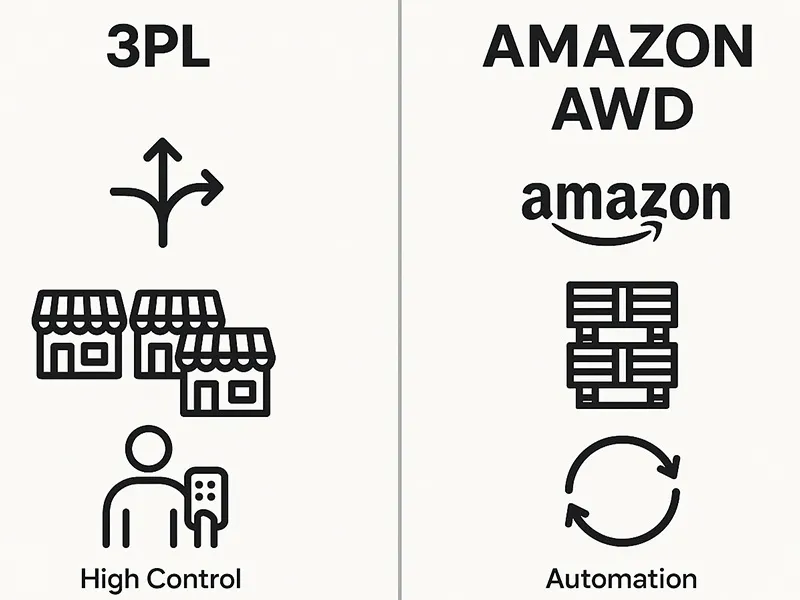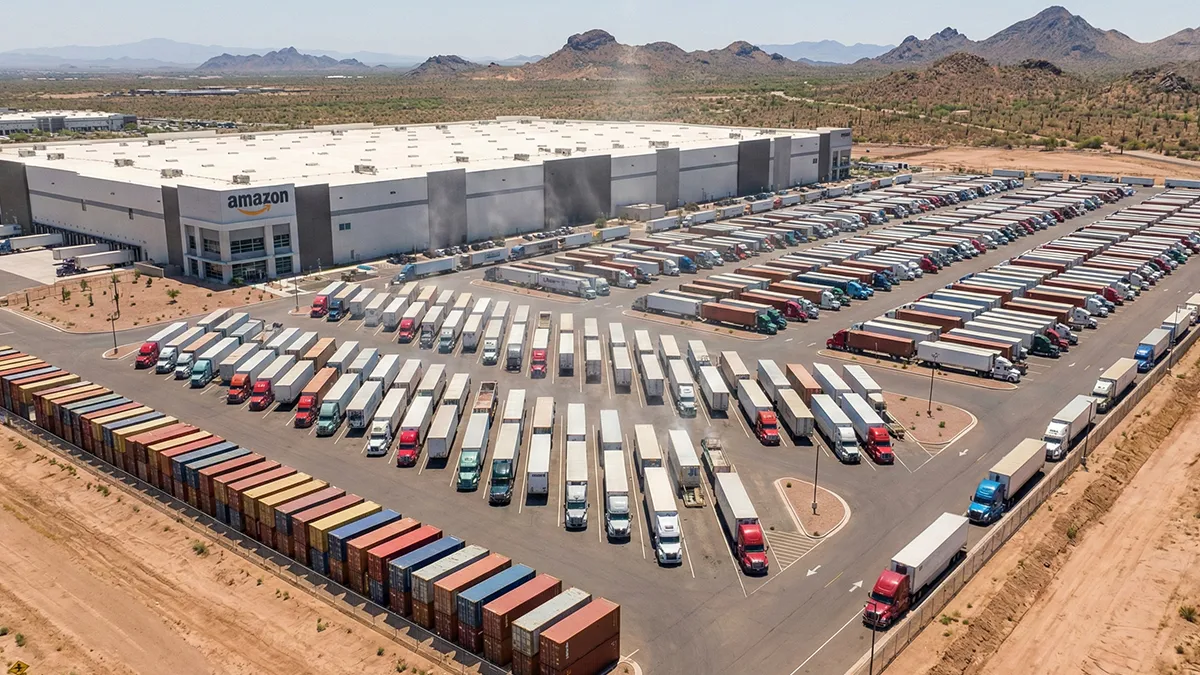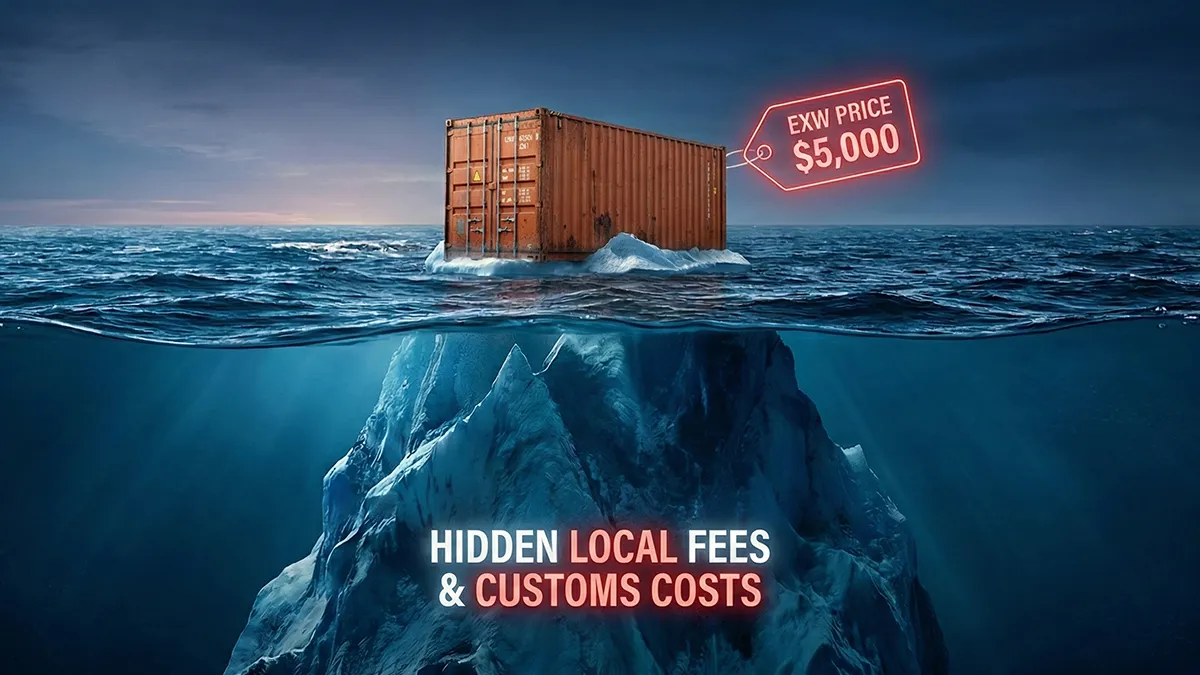3PL vs. Amazon AWD: Which Storage Strategy is Right for Your Business?

Introduction
For Amazon and e-commerce sellers, choosing between third-party logistics (3PL) providers and Amazon Warehousing & Distribution (AWD) can be a make-or-break decision.
-
3PL offers multichannel fulfillment, customization, and value-added services.
-
AWD provides low-cost, upstream bulk storage that seamlessly replenishes FBA inventory.
This guide compares 3PL vs AWD vs FBA, explains fees, control, and flexibility, and shows why a hybrid model (3PL + AWD + FBA) often delivers the best results.
As an Amazon SPN partner supporting Amazon Ship Track, Zbao Logistics can implement the hybrid strategy end-to-end.
Related reading :
• Amazon FBA Logistics & Delivery
• Customs Clearance Services
• Sea Freight from China to USA
What Is a 3PL?
A 3PL (third-party logistics provider) manages key parts of your supply chain beyond storage, including:
-
Warehousing & Receiving – unloading containers, palletization, and FBA prep.
-
Inventory Management (WMS) – stock visibility, cycle counts, and alerts.
-
Order Fulfillment – shipping B2C, B2B, and marketplace orders.
-
Transportation – international freight and domestic trucking at negotiated rates.
-
Reverse Logistics – handling returns, refurbishing, and recycling.
-
Value-Added Services – kitting, bundling, inserts, relabeling, rework.
Keywords: amazon 3rd party logistics, amazon 3pl services, third party fulfillment amazon, 3pl warehouse for amazon sellers
Best for: multichannel sellers who need flexibility, customization, and control.
What Is Amazon AWD?
Amazon Warehousing & Distribution (AWD) is Amazon’s own upstream bulk storage solution, designed to keep FBA stocked at lower storage costs.
-
Primary function: store large volumes of inventory and auto-replenish FBA.
-
Not designed for: kitting, bundling, perishables, hazmat, or multichannel fulfillment.
Official resources:
• Amazon AWD overview
• Seller Central AWD fees & policies
Best for: Amazon-only sellers with large, predictable inventory volumes who want hands-off replenishment.
3PL vs AWD vs FBA — Side-by-Side Comparison
| Feature | 3PL | AWD | FBA |
|---|---|---|---|
| Primary Role | Full-service logistics: warehousing, prep, fulfillment | Bulk storage & replenishment into FBA | Final fulfillment (Prime-eligible) |
| Best For | Multi-channel sellers | Amazon-only sellers with bulk stock | Prime delivery |
| Inventory Control | High (direct visibility, SOPs, audits) | Low-Medium (Amazon controlled) | Low |
| Flexibility | Very high (custom prep, kitting, multichannel) | Low (storage + transfer only) | Low |
| Multichannel | Yes (Shopify, Walmart, B2B) | No | Limited (via MCF) |
| Prep/Value-Added | Yes (FBA prep, bundling, rework) | No | Limited |
| Pricing Model | Inbound + storage + outbound + VAS | Storage + processing + transportation | Storage + fulfillment fees |
| Prime Eligibility | Via FBA/MCF integration | Indirect (feeds FBA) | Yes |
Keywords: amazon fba vs 3pl, amazon awd vs fba, amazon warehousing services vs 3pl
Pros & Cons
3PL — Pros
-
High control & visibility over inventory.
-
Multichannel fulfillment for Amazon + Shopify + B2B.
-
Custom solutions like kitting, inserts, labeling.
-
Scalability for seasonal peaks.
3PL — Cons
-
Pricing can be complex (inbound, storage, outbound, VAS).
-
Requires due diligence when choosing providers.
AWD — Pros
-
Lower storage costs vs FBA.
-
Automatic FBA replenishment reduces manual management.
-
Deep integration with Amazon systems.
AWD — Cons
-
Limited flexibility (no multichannel, no bundling).
-
Restrictions on product types and sizes.
-
Dependent on Amazon policies/fees which can change anytime.
Pricing Explained
Note: AWD and FBA fees change frequently. Always confirm with Seller Central.
3PL Pricing
-
Inbound fees: unloading, receiving, put-away.
-
Storage fees: per pallet, cubic foot, or item (may include minimums).
-
Outbound fees: pick & pack, shipping.
-
Value-added services: kitting, relabeling, returns management.
Hidden cost checklist: minimums, seasonal surcharges, fuel, oversize/overweight fees, extra storage charges.
Keywords: 3pl storage rates, amazon 3pl pricing, cheapest 3pl in usa, 3pl price comparison
AWD Fees
-
Storage fee – charged monthly per cubic foot.
-
Processing fee – per box when transferring from AWD to FBA.
-
Transportation fee – per cubic foot for AWD → FBA transfer.
-
Integrated rate eligibility – discounts apply when using Amazon Global Logistics or Partnered Carrier programs.
Keywords: amazon awd fees, amazon warehousing and distribution fees, awd services
Which Sellers Should Choose What?
-
Amazon-only, predictable demand, large bulk stock → AWD + FBA
-
Multichannel sellers needing customization → 3PL + FBA
-
Scaling brands, seasonal fluctuations → 3PL hub + AWD buffer + FBA frontline
Keywords: 3pl for amazon sellers, 3pl for amazon fba, amazon 3rd party fulfillment, awd vs ltl shipment
Hybrid Strategy: 3PL + AWD + FBA
Workflow:
-
Factory (China) → 3PL (receiving, QC, FBA prep, kitting).
-
3PL → AWD: send buffer inventory for low-cost storage.
-
AWD → FBA: Amazon auto-replenishes stock.
-
3PL → Multichannel: Shopify, Walmart, B2B orders.
Why this works:
-
Cost savings from AWD.
-
Control & flexibility from 3PL.
-
Prime delivery power from FBA.
Why Zbao:
-
Amazon SPN partner (officially certified).
-
Supports Amazon Ship Track (real-time visibility).
-
In-house customs brokerage (fewer clearance delays).
-
Owned trailer fleet in North America (control last-mile).
-
Direct OA alliance pricing (better freight rates).
-
One team, one invoice (simplified management).
FAQs
Q1: What does 3PL mean? Is Amazon a 3PL?
A: 3PL = third-party logistics. Amazon provides 3PL-like services (FBA, MCF, AWD), but an independent 3PL offers multichannel flexibility and customization.
Q2: Amazon AWD vs FBA — what’s the difference?
A: AWD = upstream storage + replenishment. FBA = customer-facing fulfillment.
Q3: What are AWD fees vs 3PL storage rates?
A: AWD fees = storage, processing, transportation. 3PL = inbound, storage, outbound, VAS. Always compare by the same unit (per pallet, per cubic foot, per order).
Q4: AWD vs LTL shipment to FBA — what changes?
A: LTL FBA shipments must follow FBA prep + appointment rules. AWD is designed for bulk upstream transfers.
Q5: What is the cheapest 3PL in the USA?
A: Cost alone isn’t enough. Review hidden fees, SLAs, and service scope. The “cheapest” provider often costs more in delays or poor compliance.
Q6: Can a 3PL handle customs clearance and ocean freight?
A: Yes. A certified 3PL/NVOCC with in-house customs brokerage can manage factory-to-Amazon end-to-end.
Why Zbao Logistics
Zbao Logistics is an Amazon SPN partner and supports Amazon Ship Track. With in-house customs brokerage, our own trailer fleet, and direct pricing from the OA shipping alliance, we provide end-to-end, one-stop solutions for FBA sellers.
Get started today: Request a Free Consultation


